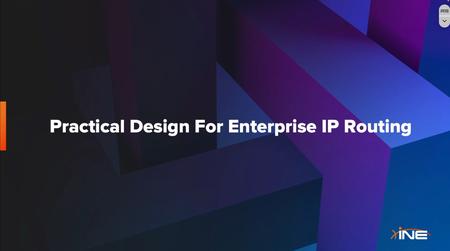English | MP4 | AVC 1920×1080 | AAC 44KHz 2ch | 29 Lessons (7h 4m) | 3.17 GB
You’ve taken the time to learn how to configure, implement and troubleshoot your favorite routing protocol. Perhaps it’s EIGRP or OSPF. Maybe you’re a BGP configuration expert. But do you know the best practices and guidelines to design an Enterprise network with these protocols such that they can scale and be secure? This course will take you to the next level in your Network Engineering journey by going over the best practices and design guidelines for EIGRP, OSPF, IS-IS, BGP, and Route Redistribution for Enterprise networks. You’ll learn how to implement a routing protocol in such a way that it can grow as your network grows. You’ll learn how to secure your protocols against rogue routers or malicious intent. You’ll learn how to add BGP to an Enterprise network that has grown beyond the capabilities of its IGP and much, much more.
Table of Contents
1 Course Introduction
2 Why a Good Routing Design Matters
3 The Three Tier Hierarchical Model
4 General Routing Design Tips
5 Selecting a Routing Protocol
6 Best Practices for EIGRP Route Tuning
7 EIGRP Scalability Best Practices
8 EIGRP Security Guidelines
9 Other General EIGRP Design Guidelines
10 Best Practices for OSPF Path Manipulation
11 Ensuring OSPF Scalability
12 OSPF Security Guidelines
13 Other OSPF Guidelines
14 IS-IS Review
15 IS-IS Area Determination
16 IS-IS Scalability Design
17 IS-IS Path Manipulation
18 IS-IS Security Design
19 Optimizing BGP for ISP Connections
20 Enterprise BGP – Introduction To Core Network Design
21 iBGP Core Network Design
22 eBGP Core Network Design
23 BGP Hybrid Core Network Design
24 BGP Core Scalability
25 BGP Route Reflector Best Practices
26 BGP Community Usage
27 Controlling BGP Update Generation
28 Route Redistribution Design
29 Course Conclusion
Resolve the captcha to access the links!
